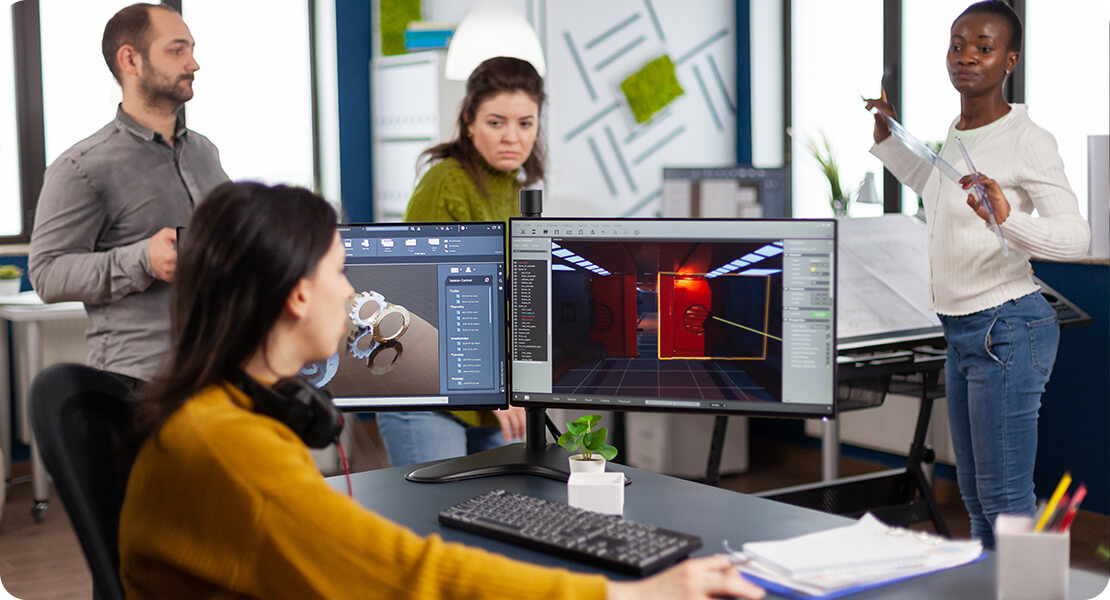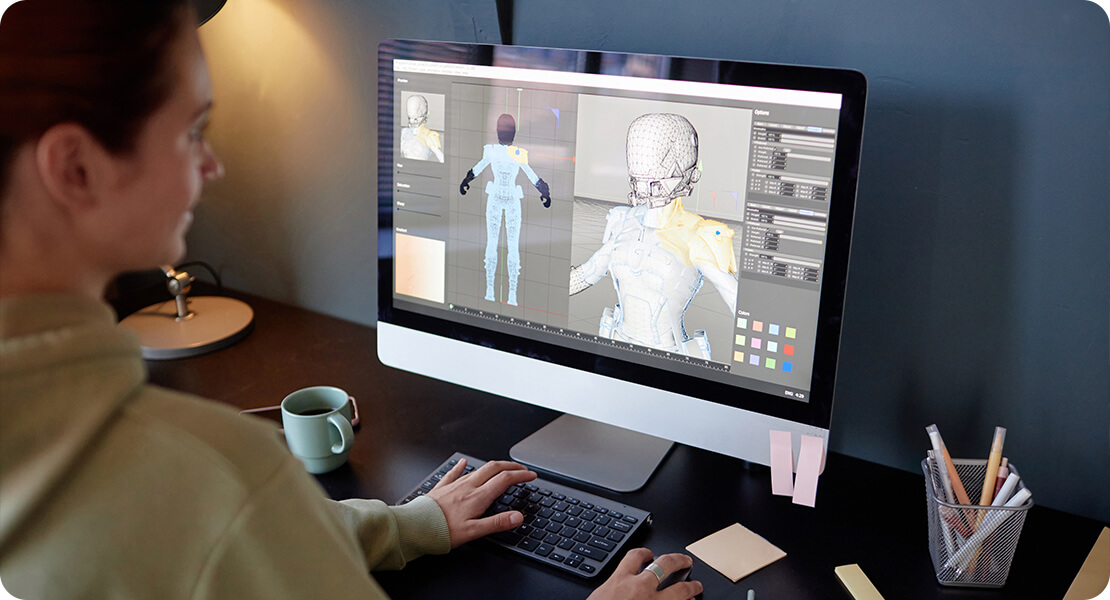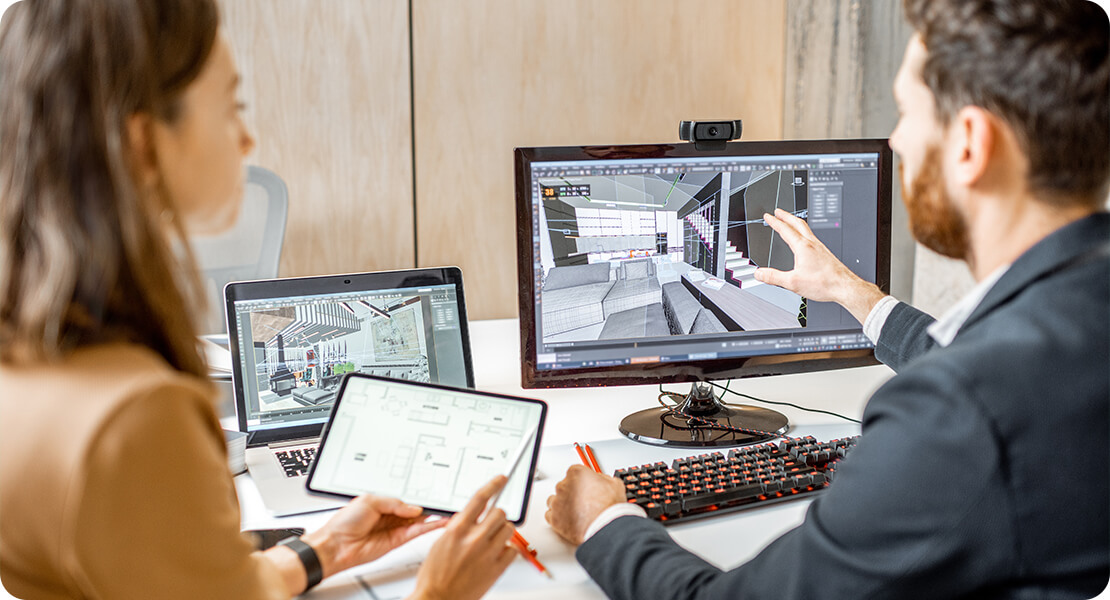
Let’s face it—explainer videos have been around for a while now. You’ve probably seen dozens, maybe even hundreds, from those simple 2D animations walking you through an app to sleek corporate videos breaking down complex products in under two minutes. But just when you thought you’d seen it all, something new is starting to shift the landscape entirely: augmented reality (AR).
Now, this isn’t just a trendy tech buzzword. AR is fast becoming a powerful tool in marketing, education, healthcare, retail, and pretty much every industry that’s ever needed to show rather than tell. Combine AR with the proven impact of explainer videos, and you’ve got a game-changing way of engaging with audiences on a whole new level.
In this article, we’re going to dive deep into the world of AR explainer videos. We’ll look at how they work, what makes them different, where they shine the most, and what the future might look like for this evolving format. Ready? Let’s jump in.
What Exactly Are AR Explainer Videos?
So first things first—what do we actually mean by “explainer videos in augmented reality”?
Traditional explainer videos are designed to convey ideas quickly and clearly, often using animation, voiceover, and text. They’re great for explaining processes, services, or products in a bite-sized way. Now, add AR to the mix and suddenly you’re not just watching a video—you’re stepping into it.
AR explainer videos use augmented reality to project visual elements into the real world through a smartphone, tablet, or AR headset. Instead of watching a video on a screen, users can interact with a 3D version of the information in their physical space. Imagine assembling furniture with a floating guide right in your living room, or exploring the inner workings of a jet engine from your kitchen table.
It’s immersive, hands-on, and incredibly memorable.
Why Traditional Videos Are Hitting a Ceiling
Let’s be honest—video content is everywhere. And while explainer videos have done wonders for simplifying communication, they’re also starting to feel a bit… samey. Attention spans are shorter than ever, and viewers are increasingly tuning out unless something truly grabs them.
AR explainer videos break through that noise. They give your audience an experience rather than a pitch. It’s the difference between watching a cooking video and having a virtual chef walk you through each step in your own kitchen. You’re no longer a passive observer—you’re actively involved.

This change from passive to interactive is what gives AR such a strong edge. It allows for retention, engagement, and learning in a way that’s simply not possible with flat video formats.
The Tech Behind It: How Do AR Explainer Videos Work?
Alright, so how does this actually happen? What turns an ordinary explainer into an AR experience? It all comes down to a clever combination of software, sensors, and creative design. Traditional explainer videos play in a fixed frame, usually on a flat screen. AR explainer videos, on the other hand, break out of the screen and become part of your physical space. To pull that off, your device needs to understand its surroundings and anchor digital content in a way that feels natural and seamless.
At the core of it all are AR software development kits (SDKs)—the toolkits that make augmented reality possible. Leading platforms like Apple’s ARKit and Google’s ARCore offer developers the frameworks to build rich, interactive AR experiences. These SDKs tap into the camera, motion sensors, GPS, and depth detection features of a smartphone or tablet to map out the world around you. Once the environment is understood, virtual objects—like a 3D animation or an interactive button—can be ‘placed’ into your space and will stay fixed in place, even as you move.
To create the actual content that appears in these AR explainers, designers and developers rely on software like Blender, Unity, Maya, or Adobe Aero. These platforms allow for the creation of detailed 3D models, animations, and interactive layers. Everything you see in an AR explainer—the product spinning on your desk, the heart beating in front of you, or the building blueprint floating in your living room—starts as a digital asset that’s crafted and textured just like in a video game. Once designed, these assets are embedded with interactive behaviours so users can engage with them by tapping, dragging, or simply walking around them.

One of the most exciting developments in this space is the rise of WebAR. Unlike traditional AR experiences, which often require a dedicated app to be downloaded, WebAR experiences are browser-based. This means you can access an AR explainer just by scanning a QR code or clicking a link—no installations, no waiting. WebAR reduces friction significantly, allowing brands and educators to reach a broader audience with far greater ease. It’s become a particularly useful format for marketing campaigns, pop-up educational content, and interactive packaging, where convenience is key.
But there’s more to AR explainers than just visuals. Many include spatial audio, which adapts to your movement and adds depth to the experience. Imagine a product demo where the sound of a motor intensifies as you get closer to the virtual engine, or an educational explainer where a narrator’s voice seems to follow your line of sight. This audio layering not only enhances realism but also directs attention and makes the interaction feel more natural and immersive. Integrating audio cues with visual content helps guide users through more complex explanations, making the entire experience feel intuitive and engaging.
Finally, a crucial part of making all this work is real-time performance optimisation. AR experiences demand a lot from devices, especially when multiple objects are being rendered and interacted with simultaneously. Developers must carefully optimise file sizes, use efficient code, and streamline 3D models to prevent lag or glitches. Lighting, shadow rendering, and texture quality must all be balanced to ensure the visuals are impressive without overloading the system. It’s a delicate dance between art and engineering, but when done right, the result is an AR explainer video that feels smooth, interactive, and surprisingly lifelike.
Use Cases: Where AR Explainer Videos Really Shine
So, where does this new format make the biggest impact? Honestly, the possibilities are endless, but let’s explore a few standout areas.
1. Product Demonstrations
Imagine you’re shopping online for a new blender. Instead of watching a standard video, you scan a code and a full-sized virtual blender appears on your kitchen counter. You can walk around it, explore its features, and even watch how the blades move in real time. This creates an immediate and tangible connection to the product—one that’s difficult to achieve with traditional e-commerce photos or standard explainer videos. It gives shoppers a clear sense of size, form, and functionality, right in their own environment.
For complex or expensive products, AR explainer videos offer transparency and trust. When customers can engage directly with a product model, rotating it, examining controls, and watching it simulate real actions, it eliminates uncertainty. This is especially useful for electronics, home appliances, furniture, and even cars—anything where the customer would normally want to “see it in person” before buying. Brands that integrate AR into their product presentations are often seen as more innovative and trustworthy, simply because they’re going the extra mile to inform.
Another huge benefit is personalisation. With AR, you can showcase different product variations—colours, sizes, add-ons—right in the customer’s space. Want to see how that sofa looks in navy instead of grey? Tap and it changes. Curious about how a new TV fits on your wall? AR lets you visualise it with precision. This makes the buying experience more interactive and fun, and in doing so, it gently nudges the customer closer to conversion without the hard sell.
2. Education and Training
AR explainer videos are a goldmine for education. Students can explore the human heart in 3D, walk through the solar system, or see historical events play out in their classrooms. The ability to manipulate and observe objects or scenes from every angle makes learning more intuitive. Instead of memorising facts from a textbook, students engage directly with the subject matter, fostering better comprehension. It’s especially powerful in subjects like biology, physics, geography, and history, where spatial and visual understanding are key.

In workplace training, AR is already being used to train surgeons, engineers, and factory workers. Rather than reading manuals or watching demos, users interact directly with equipment and procedures—building confidence and understanding faster. This is particularly valuable in high-stakes industries where mistakes can be costly or dangerous. For example, engineers learning to operate complex machinery can do so in a risk-free environment, repeating tasks as many times as needed without using real materials or risking real damage.
There’s also an advantage in scalability. Once an AR explainer is created, it can be used globally across multiple teams or institutions with minimal setup. This means consistent training quality regardless of location, and updates can be pushed in real time as procedures change. Whether it’s onboarding new hires in a warehouse or teaching university students about the nervous system, AR explainer videos make learning more engaging, more interactive, and ultimately more effective.
3. Healthcare
In the medical world, AR explainer videos help both professionals and patients. Doctors can visualise complex surgeries in advance, studying patient-specific anatomy using augmented models that respond in real time. These interactive simulations allow them to rehearse steps, anticipate challenges, and even test different surgical approaches. This level of preparation not only boosts surgeon confidence but also enhances outcomes for the patient, making procedures safer and more efficient.
Patients, too, stand to benefit enormously from AR explainers. Medical consultations can be intimidating, especially when filled with unfamiliar terms and procedures. With AR, patients can view animations that show exactly what will happen during their operation, or how a condition is affecting their body. Seeing a 3D heart with clogged arteries or watching a virtual knee replacement helps demystify medical processes and can significantly reduce anxiety. It also encourages patients to be more informed and engaged in their care decisions.
Healthcare education is another key area where AR explainer videos shine. Medical students and trainee nurses can study anatomy, practise procedures, and explore diagnoses in ways that simply weren’t possible before. AR allows learners to interact with body systems layer by layer, and simulate diagnostic decisions with immediate visual feedback. This hands-on approach builds stronger practical skills and prepares students more thoroughly for real-world medical settings.
4. Real Estate and Architecture
Ever tried to imagine what a building will look like from blueprints alone? AR explainer videos let developers show 3D models of entire properties. Potential buyers can walk through rooms, understand layouts, and even visualise how sunlight will affect different spaces throughout the day. It bridges the gap between architectural plans and lived experience, giving people a far more accurate and immersive sense of space than 2D renderings or floor plans ever could.
This is especially beneficial in off-plan sales, where properties haven’t yet been built. Buyers often struggle to commit to something they can’t physically see. With AR, they can step into a virtual version of the future home, explore the kitchen, check the ceiling height, and even test different finishes on the countertops. These immersive explainers can also demonstrate technical features like underfloor heating systems or insulation layers, helping buyers understand what makes the build high quality.

Architects and interior designers also use AR explainer videos to communicate their vision more clearly to clients and stakeholders. Instead of relying on verbal descriptions or static images, they can guide people through interactive walkthroughs that evolve with the project. Want to see what happens if you raise the ceiling or knock through a wall? AR can show it instantly. It’s a dynamic and collaborative way to approach design, and it makes feedback more precise because everyone is literally seeing the same thing.
Benefits of AR Explainer Videos Over Traditional Formats
Let’s break this down a bit further. What makes AR explainer videos such a strong contender for the future?
Enhanced Engagement
Interactivity isn’t just fun—it keeps people’s attention. When users can physically interact with information, they’re far more likely to stay focused and retain what they’ve learned.
Better Retention and Recall
Studies have shown that immersive learning can improve retention rates by up to 75%. That’s huge. Whether it’s onboarding new staff or educating customers about a service, AR helps the message stick.
Higher Conversion Rates
For brands, this format isn’t just about education—it’s about results. When customers can experience a product in AR, they’re more confident in their decisions, leading to fewer returns and more completed purchases.

Emotional Connection
AR has a way of making the abstract feel personal. You’re not just seeing a product—you’re experiencing it in your own space. That builds a deeper emotional bond, which can be incredibly powerful in branding.
The Challenges (Because Nothing’s Perfect)
Of course, like any new tech, AR explainer videos come with their own set of hurdles.
Production Complexity
Creating an AR explainer video isn’t quite as simple as whipping up a 2D animation. It requires 3D modelling, spatial programming, and often a multidisciplinary team. That means longer timelines and higher costs—at least for now.
Device Limitations
Not every user has the latest iPhone or a headset like the HoloLens. While most smartphones support basic AR, more advanced features can be limited by hardware capabilities.
Accessibility Concerns
There’s also the matter of inclusivity. AR experiences must be designed to be accessible to users with disabilities, which isn’t always straightforward in immersive environments.
What the Future Holds
Despite the challenges, the trajectory is clear. AR explainer videos are only going to get more powerful, more accessible, and more common.
We’re already seeing companies experiment with AI-generated AR content, where creators can simply describe a scene and have it built automatically. As 5G and edge computing expand, the smoothness and realism of AR experiences will skyrocket.
And let’s not forget about wearables. As smart glasses become more mainstream, the barrier between digital and physical worlds will dissolve even further. One day soon, AR explainer videos might not just be projected into your home—they might live there permanently.
How to Get Started
Thinking of jumping into this new frontier? Here are a few practical tips:
- Start Simple – You don’t have to go full sci-fi right away. A simple 3D product model with a few basic interactions can still impress.
- Focus on Storytelling – AR should enhance the message, not overshadow it. Make sure your core idea still comes through loud and clear.
- Test Across Devices – Always check how your AR explainer works on different platforms and screen sizes. You want a smooth experience for everyone.
- Track the Data – Use analytics to see how users interact with your AR content. That insight will help you improve future experiences.
Final Thoughts
We’re standing on the edge of something pretty exciting here. Explainer videos have already proven their value in communication and engagement, but bringing them into augmented reality unlocks a whole new dimension—literally.
This isn’t just about fancy visuals or futuristic flair. It’s about giving people the chance to experience information rather than just consume it. Whether you’re a brand trying to build trust, a teacher trying to inspire students, or a doctor explaining a complex procedure, AR explainer videos could be the bridge between understanding and action.
If you’re interested in creating an AR explainer video for your business, feel free to get in touch with us at Spiel. We’d be happy to offer you a free strategy consultation to explore the best way to bring your ideas to life using augmented reality.
So the next time you’re planning to make a video to explain something, ask yourself: what if they could step inside the explanation?
Because that, my friend, is the next frontier.

